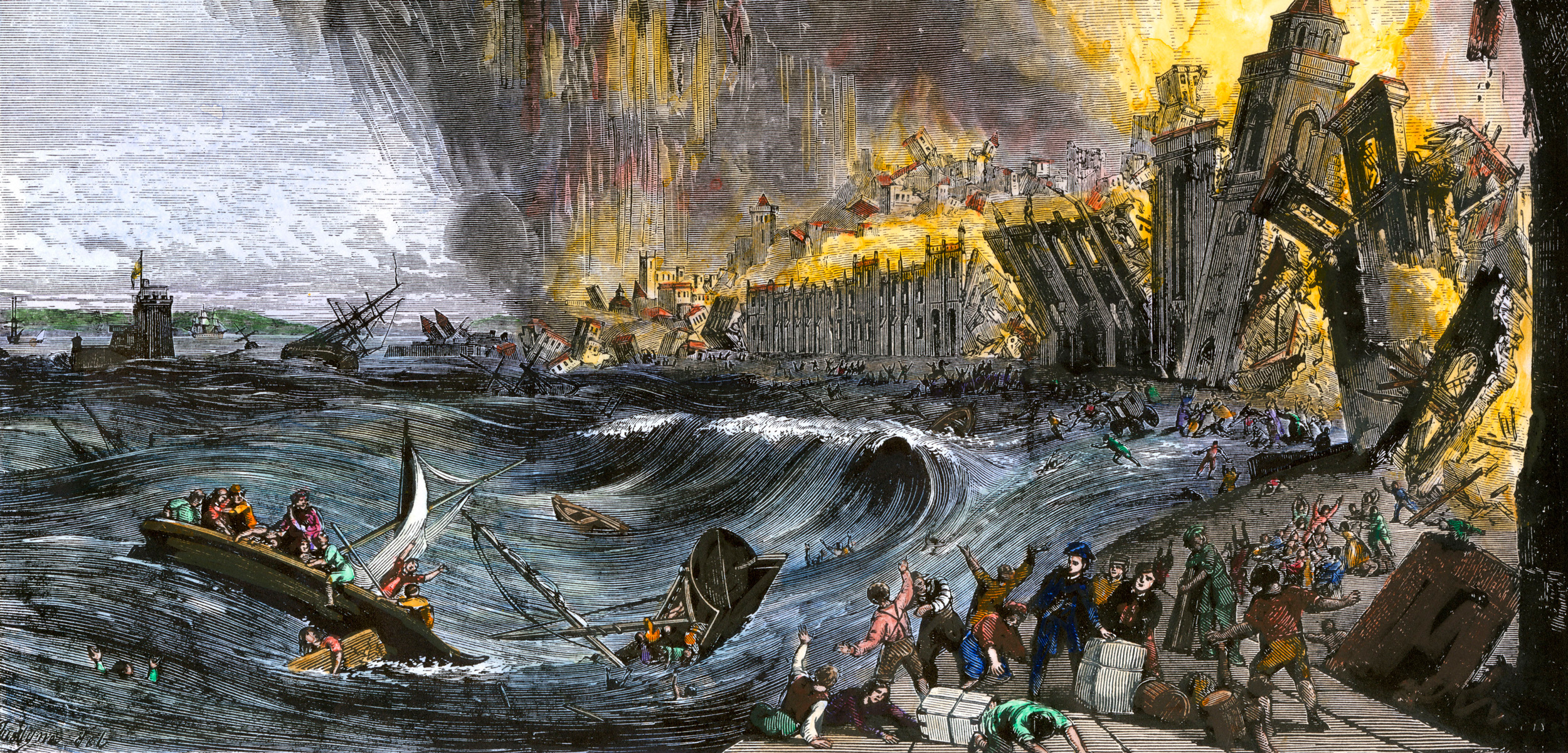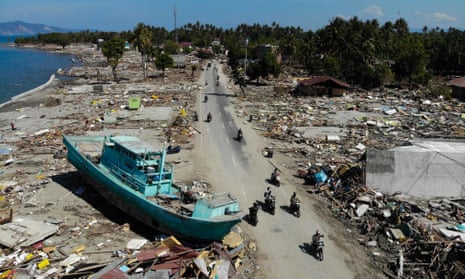A tsunami is a series of large ocean waves caused by sudden movements under the sea. These can be triggered by earthquakes, volcanic eruptions, or landslides. Tsunamis travel fast and can flood coastal areas within minutes.
Recently, on July 30, 2025, a powerful 8.8-magnitude earthquake struck Russia’s Kamchatka Peninsula. It caused tsunami waves that reached Japan, Hawaii, and other Pacific regions. Evacuations were ordered, and damage was reported, though no major injuries so far.
The deadliest tsunami ever recorded happened on December 26, 2004. A massive undersea earthquake near Sumatra triggered waves that killed over 230,000 people across 14 countries.
In this article, we’ll explore the top 10 deadliest tsunamis in history. These events show how powerful and destructive nature can be. Understanding them helps us prepare and stay safe.
Check Out| How Many Baltic Countries Are There? List Of All Baltic Countries And Their Capitals
List of Deadliest Tsunamis in the World:
According to NOAA.gov, here’s the list of the top 10 deadliest tsunamis in the world:
| Deaths | Year | Source Location | Ocean Basin | Cause | Magnitude |
| 227899 | 2004 | Indonesia, N. Sumatra | Indian | Earthquake | 9.1 |
| 50000 | 1755 | Portugal, Lisbon | Atlantic | Earthquake | 8.5 |
| 34417 | 1883 | Indonesia, Krakatoa | Indian | Volcano | - |
| 31000 | 1498 | Japan, Enshunada Sea | Pacific | Earthquake | 8.3 |
| 27122 | 1896 | Japan, Sanriku | Pacific | Earthquake | 8.3 |
| 25000 | 1868 | Chile, Northern | Pacific | Earthquake | 8.5 |
| 18453 | 2011 | Japan, Honshu Island | Pacific | Earthquake | 9.1 |
| 14524 | 1792 | Japan, Shimabara Bay, Kyushu Island | Pacific | Volcano | - |
| 13486 | 1771 | Japan, Ryukyu Islands | Pacific | Earthquake | 7.4 |
| 8000 | 1586 | Japan, Ise Bay | Pacific | Earthquake | 8.2 |
1. 2004 Indian Ocean Earthquake and Tsunami (Indonesia, N. Sumatra)
Source: History.com
On December 26, 2004, a colossal earthquake with a magnitude of 9.1 struck off the coast of Sumatra, Indonesia. This powerful tremor unleashed a series of devastating tsunamis that surged across the Indian Ocean. The waves, some reaching heights of over 30 meters, traveled thousands of kilometers, striking coastal communities in fourteen different countries.
Indonesia was hit hardest, but countries like Sri Lanka, India, and Thailand also suffered immense destruction. The sheer scale of the tsunami and the lack of an early warning system led to an unprecedented loss of life, making it one of the deadliest natural disasters in recorded history. Its impact highlighted the urgent need for global tsunami warning systems.
2. 1755 Lisbon Earthquake and Tsunami (Portugal, Lisbon)

Source: Hakai Magazine
On November 1, 1755, a massive earthquake, estimated at a magnitude of 8.5, rocked Lisbon, Portugal. The initial shock caused widespread destruction to buildings. However, the terror was far from over. Within minutes, a series of enormous tsunami waves, some reportedly 6 meters high, crashed into the city from the Atlantic Ocean.
These waves swept away debris, engulfed coastal areas, and caused further devastation and loss of life. The tsunami also affected the coasts of Spain, Morocco, and even parts of the Caribbean. This catastrophic event profoundly impacted European thought, leading to new scientific and philosophical discussions about natural disasters and divine intervention.
3. 1883 Krakatoa Eruption and Tsunami (Indonesia, Krakatoa)

Source: Science|How stuff works
In August 1883, the Krakatoa volcano, located between the islands of Java and Sumatra in Indonesia, erupted with unimaginable force. This cataclysmic volcanic explosion generated massive tsunami waves that radiated across the Indian Ocean. Some waves reached heights of up to 37 meters (120 feet) and crashed into the nearby islands, completely obliterating coastal towns and villages.
The sound of the eruption was heard thousands of kilometers away, and the tsunamis traveled as far as the Arabian Peninsula and South Africa. The sheer power of the eruption and the resulting tsunamis caused widespread devastation and a staggering loss of life, profoundly altering the geography of the region.
4. 1498 Enshunada Sea Earthquake and Tsunami (Japan)

Source: The Guardian
In 1498, a significant earthquake, estimated at a magnitude of 8.3, struck the Enshunada Sea off the coast of Japan. This powerful underwater tremor triggered a destructive tsunami that swept over coastal areas.
Historical records suggest that the tsunami caused widespread flooding and damage to coastal communities, leading to a considerable loss of life. This event serves as a stark reminder of Japan's long history with seismic activity and the resulting threat of tsunamis.
5. 1896 Sanriku Earthquake and Tsunami (Japan)

Source: www.asahi.com
On June 15, 1896, a powerful earthquake with an estimated magnitude of 8.3 occurred off the coast of Sanriku, Japan. This earthquake generated an incredibly destructive tsunami that struck the northeastern coast of Honshu. Despite the relatively minor shaking felt from the earthquake itself, the tsunami waves that followed were enormous, reaching heights of up to 38 meters (125 feet) in some areas.
The waves crashed ashore with devastating force, sweeping away homes, villages, and fishing boats. The immense loss of life underscored the unique danger of "tsunami earthquakes," where the earthquake shaking is minimal, but the resulting tsunami is catastrophic.
Read On| Russia Earthquake led Tsunami Impacting Countries with Waves as High as…
6. 1868 Arica Earthquake and Tsunami (Chile, Northern)

Source: Canterbury Pilgrims
On August 13, 1868, a massive earthquake, estimated at a magnitude of 8.5, struck off the coast of northern Chile, near the city of Arica (then part of Peru). This powerful earthquake generated a trans-Pacific tsunami that caused widespread destruction across the Pacific Ocean. The initial waves devastated the Chilean and Peruvian coasts, with Arica being particularly hard-hit.
The tsunami then traveled thousands of kilometers, causing damage in Hawaii, California, Australia, and New Zealand. The force of the waves was so immense that it carried large ships far inland. This event demonstrated the far-reaching destructive power of tsunamis generated by major earthquakes in the Pacific "Ring of Fire."
7. 2011 Great East Japan Earthquake and Tsunami (Japan, Honshu Island)
On March 11, 2011, a colossal earthquake, with a magnitude of 9.1, struck off the Pacific coast of Tohoku, Japan. This was the most powerful earthquake ever recorded in Japan and triggered a series of massive tsunami waves that inundated vast stretches of the eastern coastline. The tsunami reached heights of over 40 meters (130 feet) in some areas, overwhelming seawalls and devastating coastal towns and infrastructure.
The waves also caused a major nuclear accident at the Fukushima Daiichi Power Plant. The 2011 tsunami was a stark reminder of the immense destructive power of nature and highlighted the need for continuous improvements in disaster preparedness and early warning systems.
8. 1792 Unzen-Mayuyama Landslide and Tsunami (Japan, Shimabara Bay, Kyushu Island)
In 1792, a series of events involving Mount Unzen in Japan led to a devastating tsunami. Following an earthquake, a large section of Mount Mayuyama, a dome of Mount Unzen, collapsed, causing a massive landslide that plunged into Shimabara Bay. This immense displacement of water generated a powerful tsunami, sometimes referred to as the "Shimabara Bay Tsunami."
The waves surged across the bay, striking coastal areas and causing immense destruction and a significant loss of life. This event is a classic example of a "landslide tsunami," where a large mass of material falling into water generates destructive waves, even without a direct earthquake epicenter under the sea.
9. 1771 Ryukyu Islands Earthquake and Tsunami (Japan)
On April 24, 1771, a powerful earthquake with a magnitude of 7.4 struck near the Ryukyu Islands of Japan. This underwater earthquake generated a massive tsunami that caused widespread devastation across the islands. The tsunami waves reportedly reached incredible heights, with some estimates suggesting over 85 meters (279 feet) in certain localized areas, although this is debated.
The waves inundated coastal villages, swept away homes, and caused a catastrophic loss of life, particularly on Ishigaki Island. This event stands as one of the deadliest tsunamis in Japanese history, highlighting the extreme vulnerability of island communities to such natural disasters.
10. 1586 Ise Bay Earthquake and Tsunami (Japan)
In 1586, a significant earthquake, estimated at a magnitude of 8.2, occurred near Ise Bay in Japan. This powerful earthquake generated a destructive tsunami that impacted the coastal regions around the bay. Historical accounts indicate that the tsunami caused considerable damage and loss of life as the waves swept inland, inundating populated areas.
This event is recognized as a major natural disaster in Japanese history, underscoring the recurring threat of tsunamis to the country's coastal populations and the long-term impact of such seismic events on human settlements.

Comments
All Comments (0)
Join the conversation